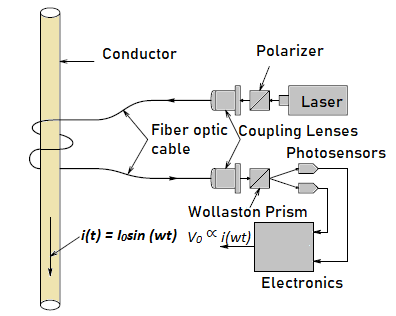Tag: Sensors
-
China First Eco-Friendly High-Temperature Melt Pressure Transducer Without Mercury Filling
Ziasiot Sensor pioneered China’s first mercury-free, eco-friendly high-temperature melt pressure transducer, which marking a significant technological breakthrough in the melt pressure industry. A Safer Alternative for extrusion melt pressure applications Traditional melt pressure transducers and thermometers have long relied on mercury (Hg) as a filling medium. However, mercury poses severe health and environmental risks due to its toxic…
-
Fundamentals of Fiber Optics Sensing Technology
Fiber optics sensors basically consist of an optical source that is coupled to an optical transmission line that directs the radiation to a sensor head as illustrated below: The light is then returned after being modified in some way by the sensor interaction, via the optical fiber, in either a reflective or transmission mode, to…
-
Impeller Flowmeters: Features, Installation Considerations & Uses
Impeller flowmeters at times referred to as paddlewheel meters are one of the frequently utilized flowmeters for industrial flow measurement applications. Impeller flowmeters are cost effective compared to turbine meters and can be used in applications that are challenging to handle with other types of flow metering instruments. They are related to turbine meters in…
-
Limit Switches vs. Proximity Sensors
An object can be used to activate a switch directly, producing an ON or OFF signal to indicate the presence of that particular object, alternatively we can use the presence of a nearby object to activate a sensor giving a signal which is either ON or OFF. A limit switch is a mechanical switch in…
-

Magneto-Optic Current Sensors for High Voltage, High Power Transmission Lines
One of the key challenges in measuring the electrical current in high voltage, high power transmission lines, is that of measurement circuit isolation. One way of measuring heavy 60 Hz currents in a conductor is through the use of a current transformer. A current transformer typically consists of a number of turns of wire wound…
-
How the Wiegand Effect is used in Sensing Instruments
The Concept behind Wiegand Effect Based Sensors The Wiegand effect technology employs the unique magnetic properties of specially processed, small-diameter ferromagnetic wire. By causing the magnetic field of this wire to abruptly reverse, a sharp, uniform voltage is generated. This pulse is referred to as a Wiegand pulse. Sensors employing this effect need only…
-
Piezoelectric Accelerometer: Principle of Operation & Applications
An accelerometer is a sensor that is designed to measure acceleration or rate of change of speed due to motion, vibration e.g. from rotating equipment and impact events such as the deployment of an automobile airbag. Accelerometers are usually mechanically attached or bonded to an object or structure for which acceleration is to be measured.…
-
Vision Sensors: Features, Concepts & Applications in Manufacturing
Vision Sensors A vision sensor is basically a TV camera connected to a computer, usually a PC. Special vision software analyzes the video image and makes specific recommendation to the work area. Vision systems require computing power to process thousands of pixels of information continuously in order to arrive at a go/no-go decision about what…
-
How Capacitive Probes are Used to Measure Level
Capacitive probes can be used to measure the depth of liquids and solids. A rod, normally coated with PVC or PTFE, is inserted into the tank and the capacitance measured to the tank wall. The capacitance has two components C1 above the surface and C2 below the surface. As the level rises C1 will decrease…
-
How a Bubbler Device is used for Level Measurement
An often utilized technique of indirectly measuring a liquid level is to measure the hydrostatic pressure at the bottom of the container. The level can then be extrapolated from the pressure and the specific weight of the liquid. This is the principle that a bubbler device operation is based on. Pressure is commonly used as…